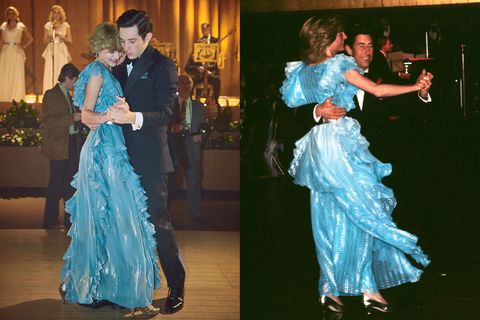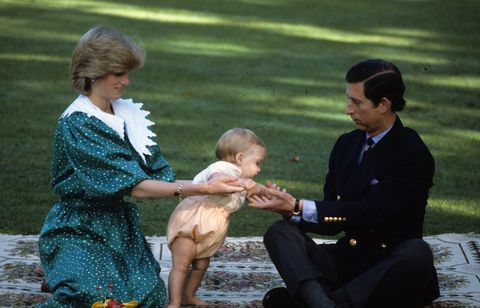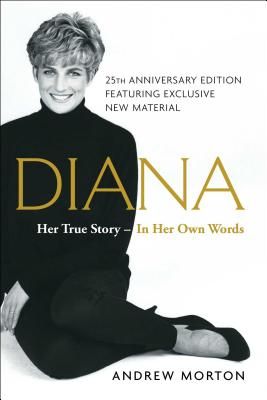In March of 1983, Prince Charles and Princess Diana embarked on their first overseas royal engagement as a couple: an ambitious six-week tour of Australia and New Zealand. Per The Telegraph, this royal tour is now remembered as the moment when “Dianamania” first took root worldwide, as the princess drew adoring crowds in every city they visited. And in season 4 of The Crown, the tour is depicted as a tipping point not only for Diana’s development as a celebrity, but also in her rocky relationship with Charles. Here’s what you need to know about the real-life tour.
How did Charles and Diana get along during their 1983 tour of Australia?
In the show, the tour gets off to a rocky start, as Charles (Josh O’Connor) and Diana (Emma Corrin) are both awkward in front of the press and miserable in private. Their public stumbling is accurate—Charles made a couple of gaffes that went down poorly down under, including a joke about feeding Prince William “warm milk and minced kangaroo,” which reportedly upset animal lovers.
In his infamous 1992 biography Diana: Her True Story—In Her Own Words, Andrew Morton called the tour “a test of endurance for Diana.” The couple were greeted by hysterical crowds in many of the cities they visited, and Diana was “jet-lagged, anxious and sick with bulimia,” per Morton.
Diana’s turmoil was not particularly well-hidden, and at one point she burst into tears during a public appearance outside the Sydney Opera House. A photographer who captured the moment, Ken Lennox, described it during the documentary Inside the Crown: Secrets of the Royals, per Vanity Fair:
I’m about four feet from the princess and I’m trying to get a bit of the opera house in the background and some of the crowd, and Diana burst into tears and wept for a couple of minutes. Charles I don’t think has noticed [Diana crying] at that stage. If he has, typical of Prince Charles to look the other way.
So although we don’t know exactly what happened behind closed doors, it seems safe to assume that Charles and Diana really were fighting in private, as the show depicts. One source of tension, according to Morton in his biography, was Charles’s jealousy—Diana was overshadowing him, and he knew it:
While Diana looked to her husband for a lead and guidance, the way the press and public reacted to the royal couple merely served to drive a wedge between them. The crowds complained when Prince Charles went over to their side of the street during a walkabout… In public, Charles accepted the revised status quo with good grace; in private he blamed Diana.
But there were some notable high points, including Charles and Diana’s dance together at a charity ball in Sydney. The public impression of the couple was, at this time, that they were very much in love.
Was there pushback to Charles and Diana bringing Prince William to Australia?
Not quite. Onscreen, Diana very reasonably refused to leave her 10-month-old son behind in England for weeks. She insists on bringing William along, angering Charles and many royal advisers in the process. Royal protocol dictates that two heirs should not travel together on the same trip in order to protect the line of succession—then, as now, Charles was first in line to the throne while William was second. This meant bringing William was breaking protocol.
But in real life, Diana didn’t push the subject. In fact, according to Morton’s biography, she was “all ready to leave William. I accepted that as part of duty, albeit it wasn’t going to be easy.” It was only when the former Australian prime minister, Malcolm Fraser, suggested they bring William that they realized it was a possibility.
And though William was separated from his parents for much of the tour, the family did enjoy some happy times together in Australia. In in her biography of Prince Charles (per Vanity Fair), Sally Bedell Smith describes a letter Charles wrote to a friend in which he recounts a particularly blissful moment with Diana and William. “The great joy was that we were totally alone together,” he wrote, recalling he and Diana watched William crawling around “at high speed knocking everything off the tables and causing unbelievable destruction,” as they “laughed and laughed with sheer, hysterical pleasure.”
Did Charles and Diana’s visit really prevent Australia from abolishing the monarchy?
The Crown depicts Charles and Diana’s visit as having major political implications. In the show, newly-elected prime minister Bob Hawke is forced to make a U-turn in his plan to remove Australia from royal rule as part of the Commonwealth and turn the country into a republic. Why? Because Diana is so extraordinarily popular that public opinion has turned in favor of the monarchy.
“She’s made us both look like chumps,” Hawke tells Charles. “No offense, but if it’d just been you, I’d have got my wishes. But then she comes along!”
Though there’s no evidence that a conversation like this actually took place between Hawke and Charles, the implication is otherwise pretty accurate. Throughout the 1970s, the popularity of the monarchy had been in decline in Australia, and Hawke was a staunch republican who made no secret of his feeling that the country would be better off as an independent nation.
But Diana was so beloved across the nation by the end of her tour with Charles that the republican cause had been set back by “two decades.” When the country held a referendum in 1999 to vote on the possibility of becoming a republic, the public voted no. Today, though, polls suggest that public opinion in Australia is once again shifting away from the monarchy.
This content is created and maintained by a third party, and imported onto this page to help users provide their email addresses. You may be able to find more information about this and similar content at piano.io





